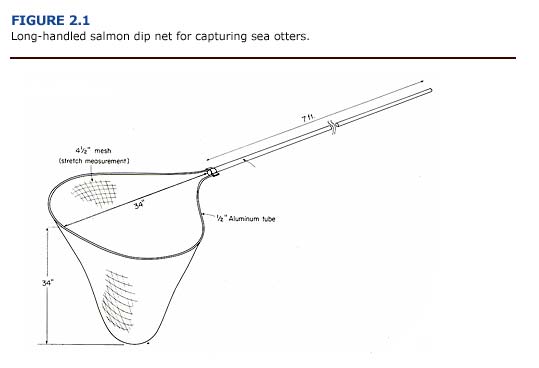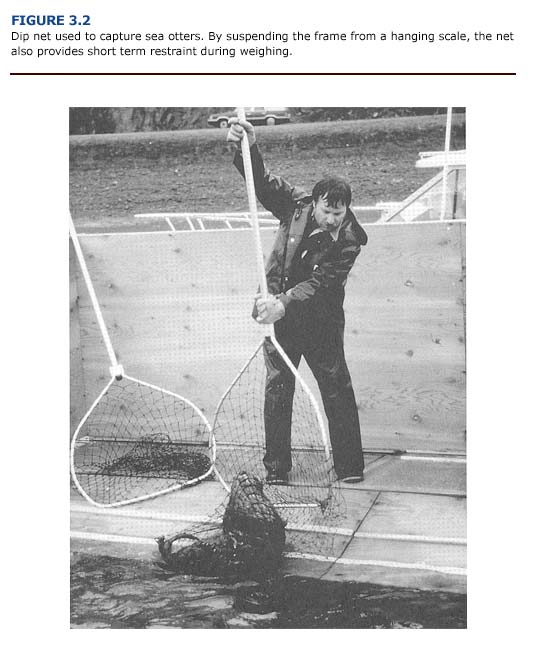Short duration physical restraint of sea otters is recommended for:
1) venipuncture,
2) intramuscular injections,
3) flipper tagging,
4) inserting subcutaneous transponder tags,
5) abdominal palpation,
6) rectal temperature measurements, and
7) swabs for rectal cultures.
Physical restraint is also recommended for longer procedures, such as cleaning, if the otter is lethargic, unconscious, or otherwise unable to tolerate chemical restraint. (See Chapter 5 for a discussion of medical conditions that preclude chemical restraint.)
The best method to physically restrain a sea otter is to use a squeeze box (Figure 3.1) (Ames et al., 1986; Cornell, 1986; Geraci and Sweeney, 1986; Ridgway, 1972; Williams, 1986). The squeeze box is open at the top and has tapered sides so that the otter can be wedged in the bottom with a stuff bag. Stuff bags (3 feet long, 1.5 feet diameter) are made of ripstop nylon or canvas filled with large pieces of foam rubber or other soft material. A sliding door at one end of the box allows the animal’s abdomen and rear flippers to be extended for veterinary procedures. The box is made of 3/4-inch-thick polyvinylchloride (PVC), fiberglass, or marine plywood, which can be cleaned after each use. All joints are bonded with PVC adhesive or epoxy and reinforced with corner molding and stainless steel screws.

Alert and active sea otters should be handled only by experienced personnel. To use the squeeze box, the otter is removed from its pen or pool with a salmon dip net (4.5-inch stretch mesh, Figures 2.1 and 3.2). Capture personnel should wear heavy leather gloves (welder’s gloves) to protect their hands from bites and scratches. While in the net, the otter is placed on its back in the squeeze box. For more experienced animal handlers, the otter can be lifted out of the dip net by its hind flippers and placed in the squeeze box. During this procedure the otter’s face is positioned forward, away from the handler. Once the otter is in the box, a stuff bag is pressed against its chest so that the animal is firmly wedged into the box. Although the otter may bite and scratch at the stuff bag, it will be unable to injure the handler. When the otter is firmly restrained, the sliding door at the end of the squeeze box can be opened and the otter’s hind quarters extended for manipulation. When properly used, the squeeze box provides safe restraint for sea otters and protects the handlers from harm.



